
How and why to create a windbreak hedge?
Let's protect ourselves and our garden from the wind
Contents
Wind is omnipresent in nature. It’s perfectly normal and nobody can do anything about it. However, wind can cause problems in the garden: stress and agitation for animals and gardeners, delayed growth for some plants, unwanted breakage of large perennials and trees, increased cold and effects of drought… Action is therefore necessary in such cases. A good idea is to plant in certain strategic places a windbreak hedge. This hedge will filter wind without blocking it and will significantly reduce its harmful effects. But how do you create a windbreak hedge and which bushes should you choose? We cover this in this advice sheet.
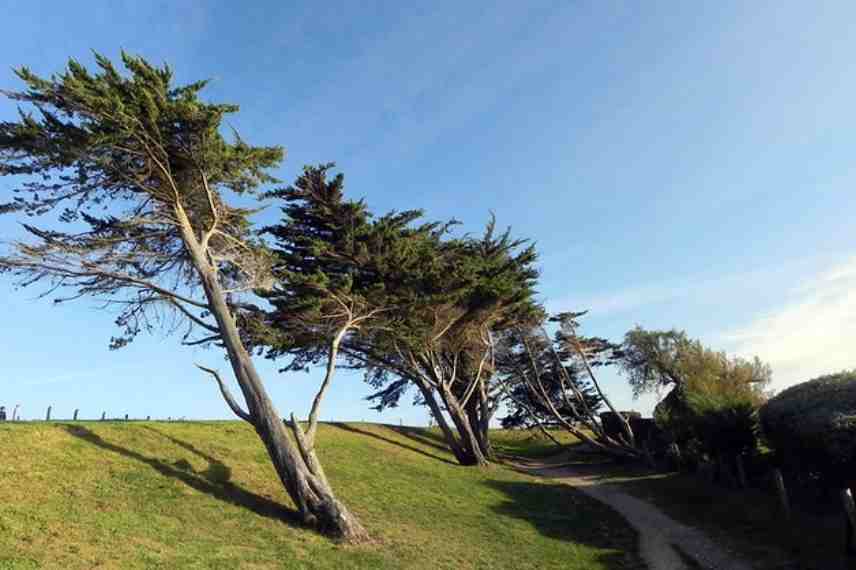
Visible effects of wind on the seafront (Photo: Groume)
Why protect against wind?
A little wind is fine. Too much wind complicates everything! Although sometimes useful, notably for certain pollination, wind in the garden brings many harmful effects when it is too strong and too persistent. Here is a list of the main negative effects of wind in the garden:
- Delay, even halt, of growth of some plants;
- Increased effects of drought;
- Increased cold: this can endanger plants with lower hardiness, and also delay start of growth;
- Risk of breakage in some tall, fragile plants and especially in trees;
- Increased stress in animals and even humans;
A windbreak hedge will therefore be an excellent solution to guard against all these negative effects. Whereas a wall will only block then divert gusts into eddies, plants will, thanks to branches and foliage, filter the wind and thus reduce its impact. A windbreak hedge is capable of filtering wind over 10 times its height. In other words, a 2-metre-high windbreak hedge will protect your garden for 20 metres behind it.
But that’s not all. A windbreak hedge will also protect from snow, reduce water and wind erosion and provide an undeniable aesthetic benefit. Moreover, a hedge made up of trees and bushes of different species that provides shelter and food for wildlife will become a sort of ecological corridor. This hedge will increase biodiversity in your garden and therefore, among other things, provide natural predators to help control potential pests.
More incidentally, a windbreak hedge can also supply wood (fuel, chippings, wattle fencing…) and fruit.
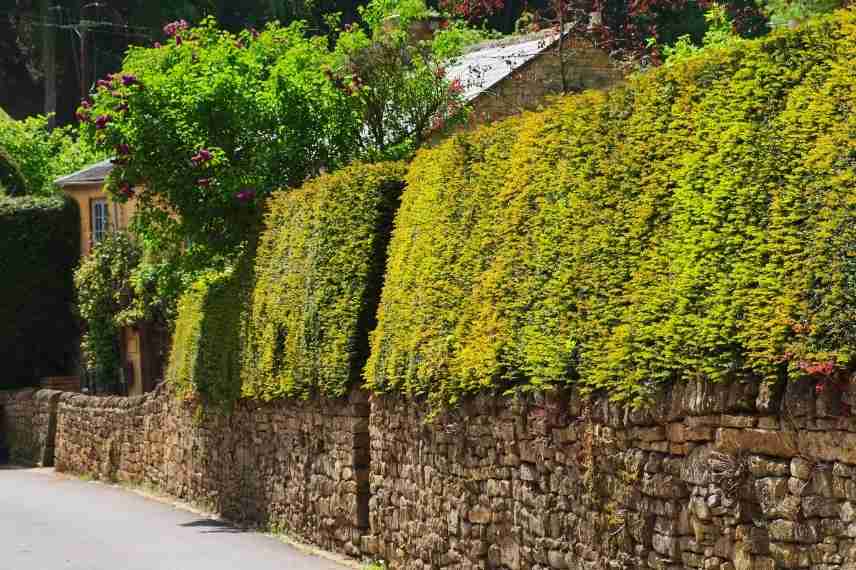
A boundary hedge is as much an aesthetic feature as a windbreak
How to create a windbreak hedge? Key principles...
Planting a windbreak hedge is fairly straightforward, but it’s important to keep a few key principles in mind :
- Plant in the spot most exposed to wind, either on the property boundary or to protect a specific area (orchard, vegetable patch, sitting area…) ;
- Plant between autumn and the end of winter for better rooting : favour bare roots which, paradoxically, establish more quickly ;
- Protect young plants during their early growth : at least a good mulch of dead leaves or other material against cold and drought ;
- Plant in at least two staggered rows (zigzag) if possible otherwise a single-row planting is already very good ;
- The hedge should be permeable and not solid because a solid barrier creates eddies and stronger winds elsewhere : so most plants are suitable but… avoid extremely compact evergreen bushes such as Thuja or Chamaecyparis ;
- Use a mix of different species and at least two thirds evergreens or marcescent to maintain wind filtration during winter.
Check local regulations ! As a general rule, a bush may be planted 50 cm from the property boundary if it will not exceed two metres in height. If it is expected to grow taller or if it is a tree, it must be planted two metres away. However check with your local council, as some municipalities are even stricter. For more information, see our article : Planting trees and bushes: what does the law say ?
Discover other Hedge shrubs
View all →Available in 0 sizes
Available in 1 sizes
Available in 1 sizes
Available in 1 sizes
Available in 1 sizes
Available in 1 sizes
Available in 1 sizes
Available in 1 sizes
Available in 2 sizes
Available in 1 sizes
Which trees or bushes should I choose for my windbreak hedge?
Ideally choose plants suited to your soil and climate: always take hardiness into account, whether soil is acidic or alkaline, whether it is clay or sandy soil, exposure… Moreover, for a windbreak hedge, plant bushes or trees that are resistant to wind.
Do not forget the basic principles: a windbreak hedge will be more effective, especially in winter, with at least two-thirds evergreen or marcescent-leaved bushes, such as hornbeam or beech. In addition, plants must be able to resist wind, drought and cold: ideally choose pioneering plants (native or not). Finally, if space allows, best to plant your hedge in several ranks, also varying plant sizes for greater effect.
Some examples of bushes for a windbreak hedge:
Some evergreens are very effective in a windbreak hedge such as yew, common holly, cherry laurel, box, pyracantha, Japanese euonymus, evergreen viburnums, junipers, escallonia, photinia, elaeagnus… But also do not forget semi-evergreen bushes or marcescent-leaved bushes such as common privet, berberis, cotoneasters, hornbeam or beech.
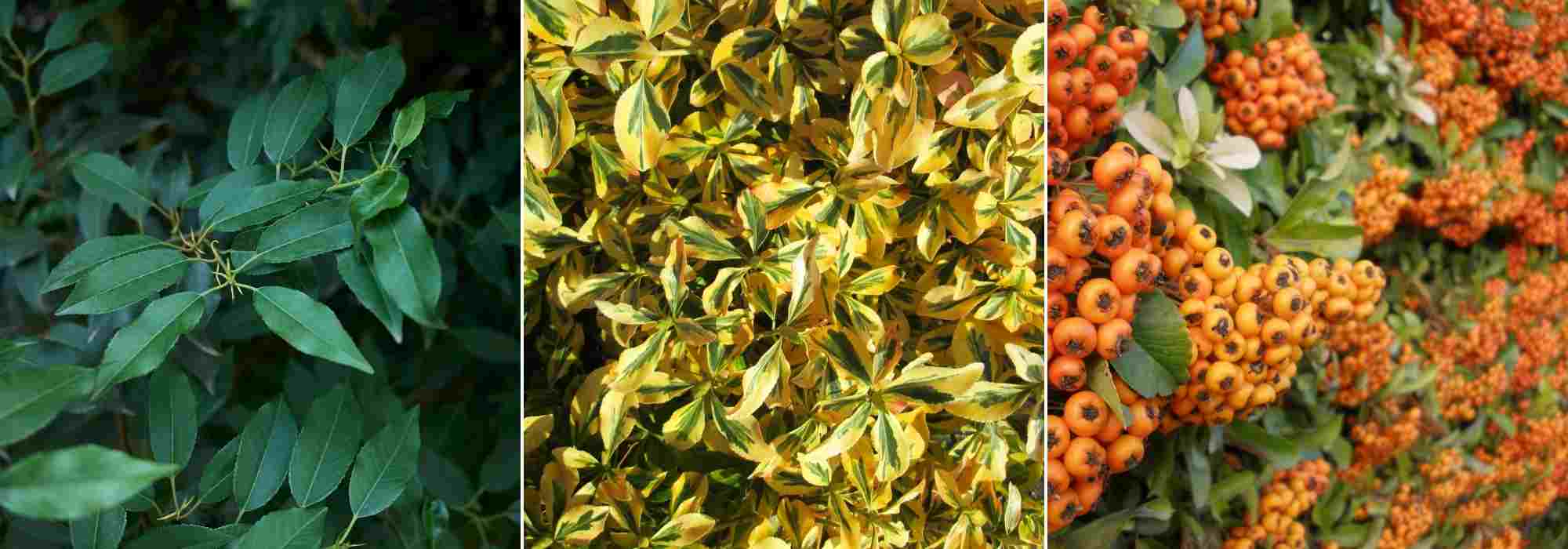
Many evergreen species withstand wind well: Prunus lusitanica, euonymus, and pyracantha with colourful berries in winter
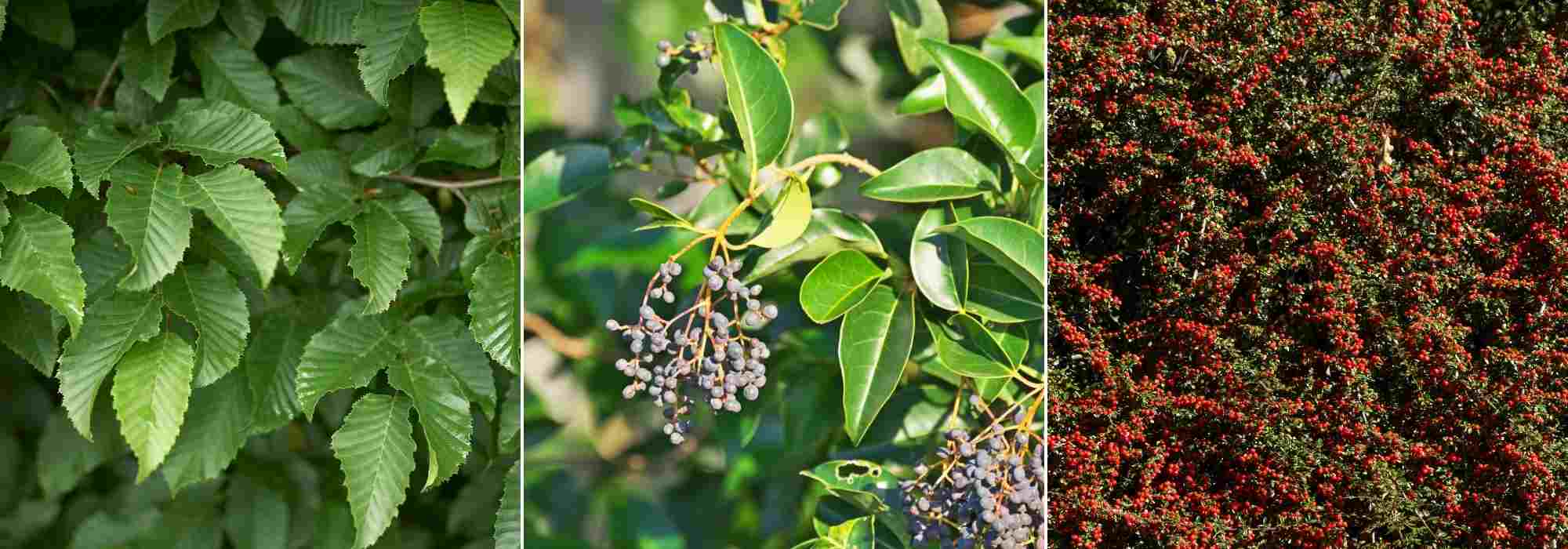
Others are marcescent like hornbeam, and have flowers or berries like privet and cotoneaster
Other deciduous bushes can also be planted to brighten the hedge with showy flowering, spectacular fruiting, attractive autumn foliage or decorative winter stems: choice is wide. Examples include: dogwoods with decorative stems, blackthorn, hawthorn, field maple, hazel, sea buckthorn, broom, gorse…
How to care for a windbreak hedge?
At planting and one year later
Several options are available for planting a windbreak hedge: in several ranks and varying tree and bush sizes in a “class photo” style, large at the back and small at the front; in two ranks in quincunx or zigzag; or, and this is often recommended as it is simpler and requires less space, in a single rank with fairly close planting.
Preferably plant in autumn so roots of trees and bushes have time to develop well before seasonal hazards (drought, wind…). However, planting is possible throughout the season for container-grown young plants, outside periods of frost or drought.
At planting, prepare trench or holes so depth and width are about twice the root volume. In bottom of holes or trench, well-rotted manure and a few shovelfuls of well-matured compost will benefit growth of your hedge.
If you choose bushes as bare roots, planting is easier but planting period is shorter (October–December). First coat roots with a mixture of clayey soil, manure and water (“praline”). Then plant bushes, keeping them upright, backfill hole or trench with extracted soil. Firm soil around bushes and give each a good watering with a can.
If you choose young plants in buckets or in pots, first immerse rootball in a bucket of water to rehydrate it. Afterwards, don’t hesitate to gently break up rootball, taking care not to damage roots. Place rootballs at bottom of hole or trench and bring extracted soil around bush. Here too, firm soil around bushes and give each a good watering with a can.
A good mulch of fallen leaves at the base will reduce water loss and competition from adventive weeds at base of young trees. In year following planting, water if necessary during dry periods.
After a few years
Little maintenance is required for this type of hedge. However, to keep it within reasonable dimensions, pruning is necessary. Pruning times vary according to species chosen: pruning of conifers and evergreen bushes can be carried out in late spring (May–June) and late summer (September–October); for deciduous bushes, ideally prune after flowering.
Mulch renewal can be carried out at any time but for a carbonaceous mulch such as BRF (ramial chipped wood), it is better to apply in autumn. Otherwise, planting perennials or groundcover bushes is an excellent idea: both effective and long-lasting.
Applying compost or manure lightly forked in each autumn at base of bushes will give them a good boost.
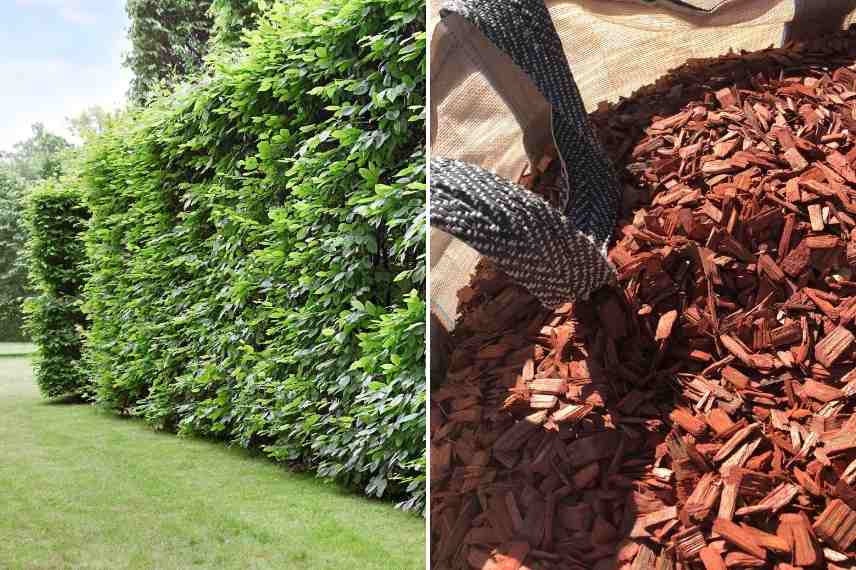
Pruning helps maintain shape and reasonable dimensions, and ramial chipped wood (BRF) mulch is a useful soil amendment at base of bushes.
Watch Olivier’s video Why create a windbreak hedge?
- Subscribe!
- Contents
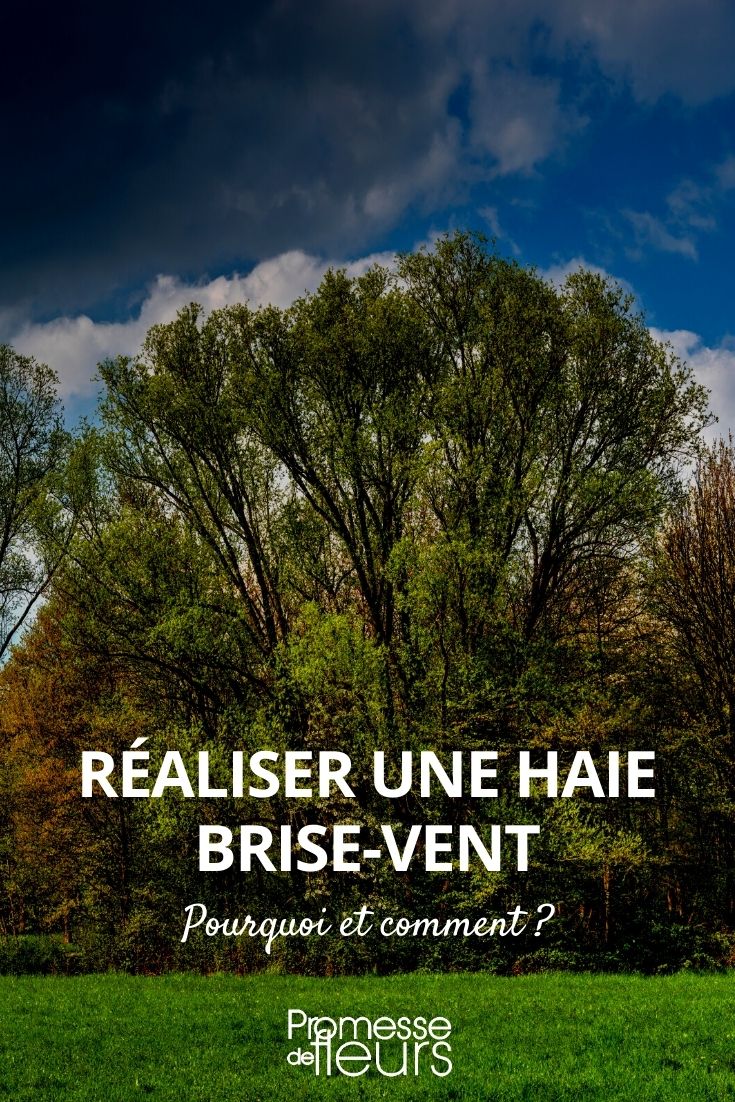



































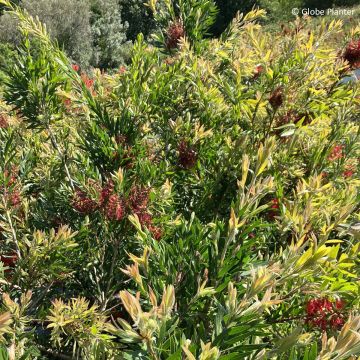
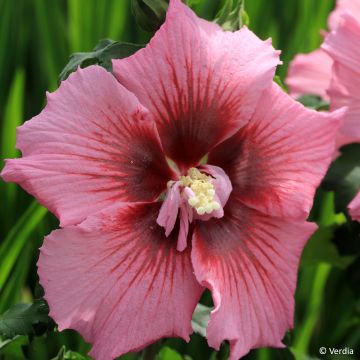
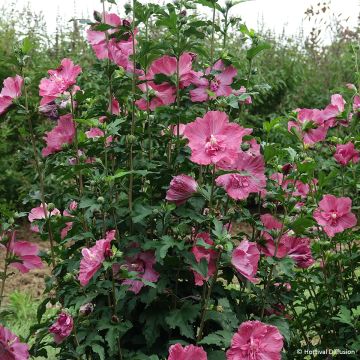


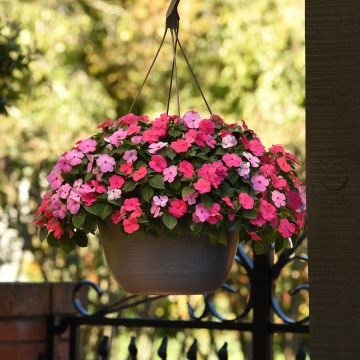
Comments